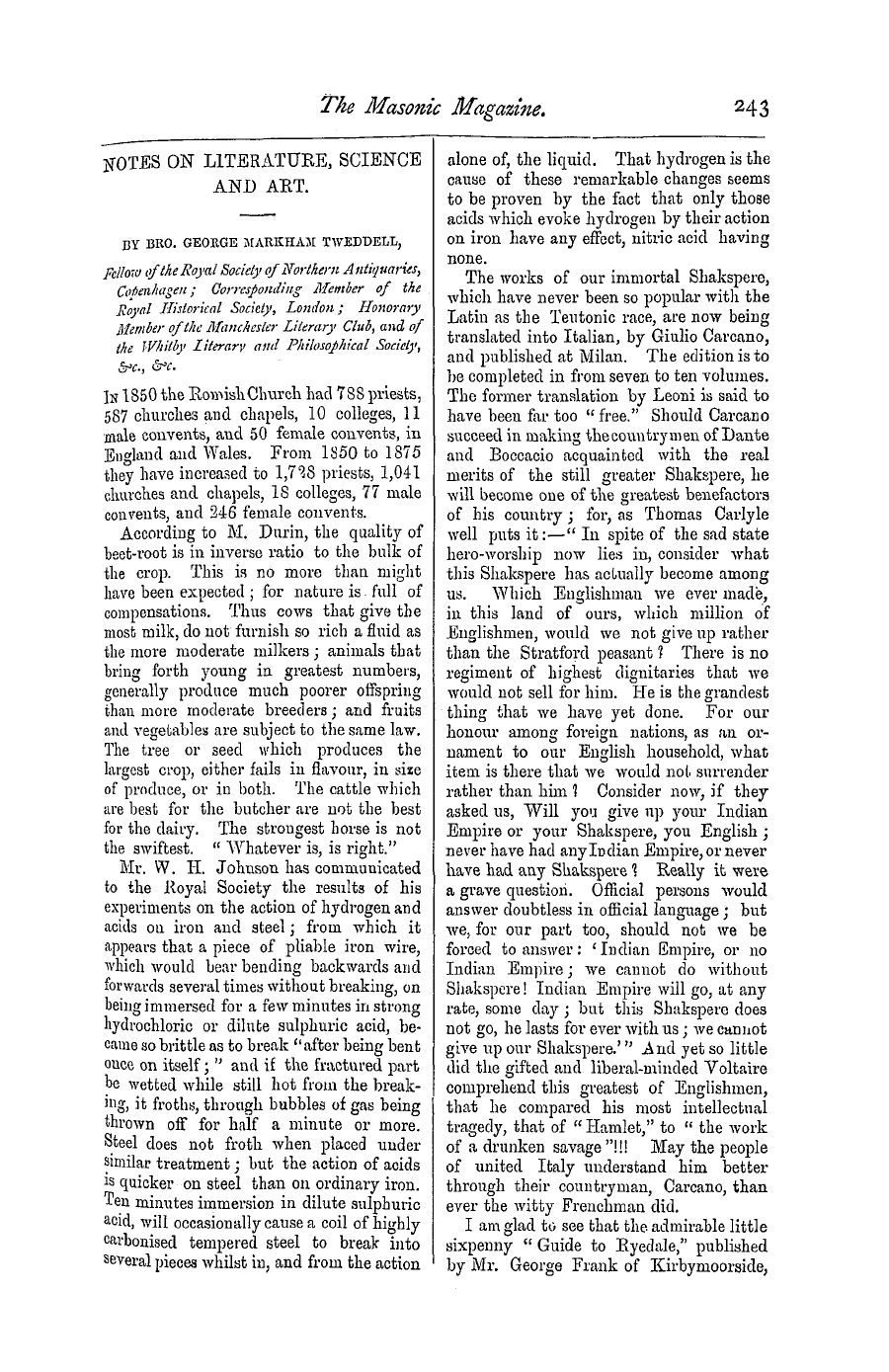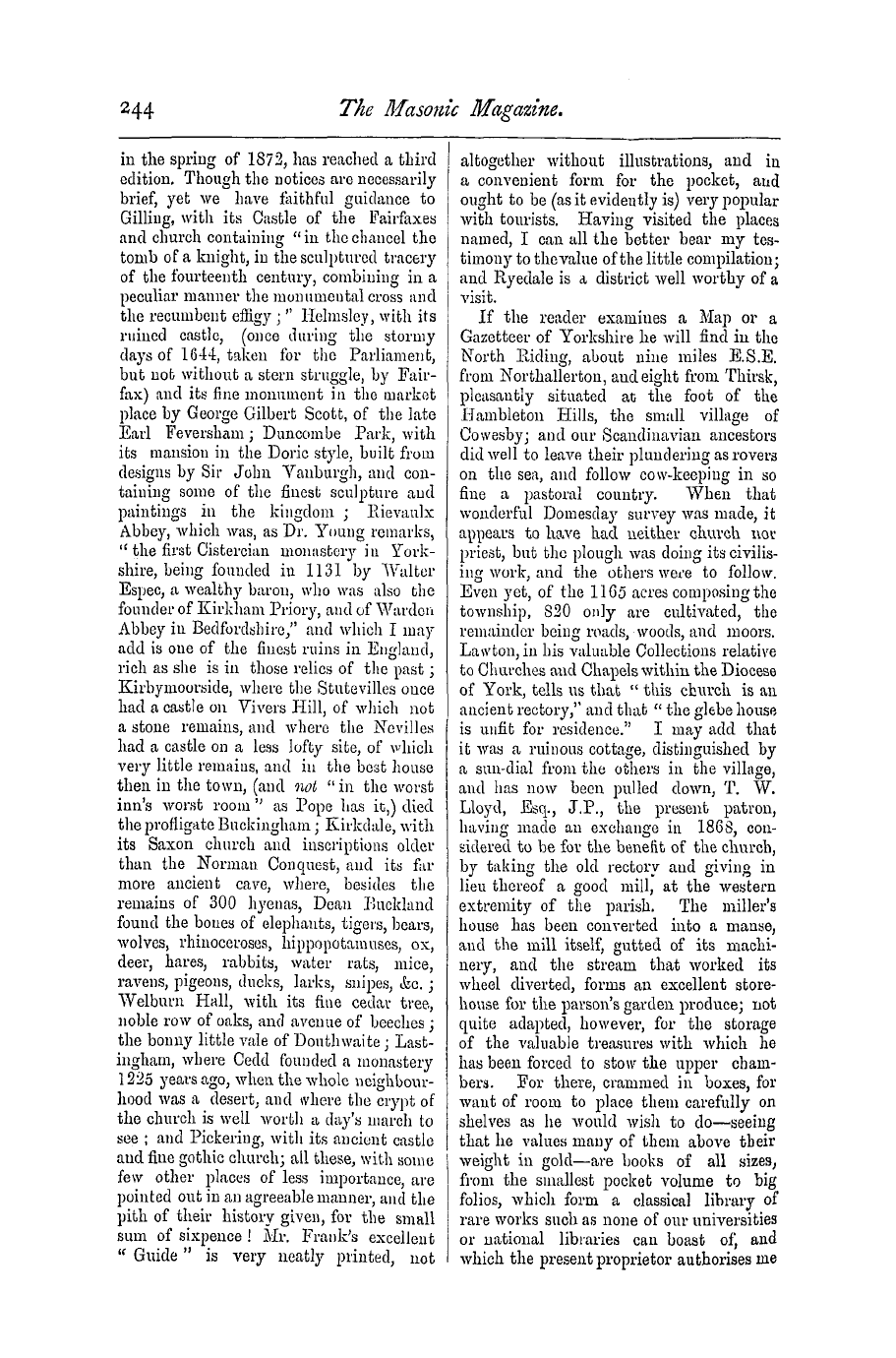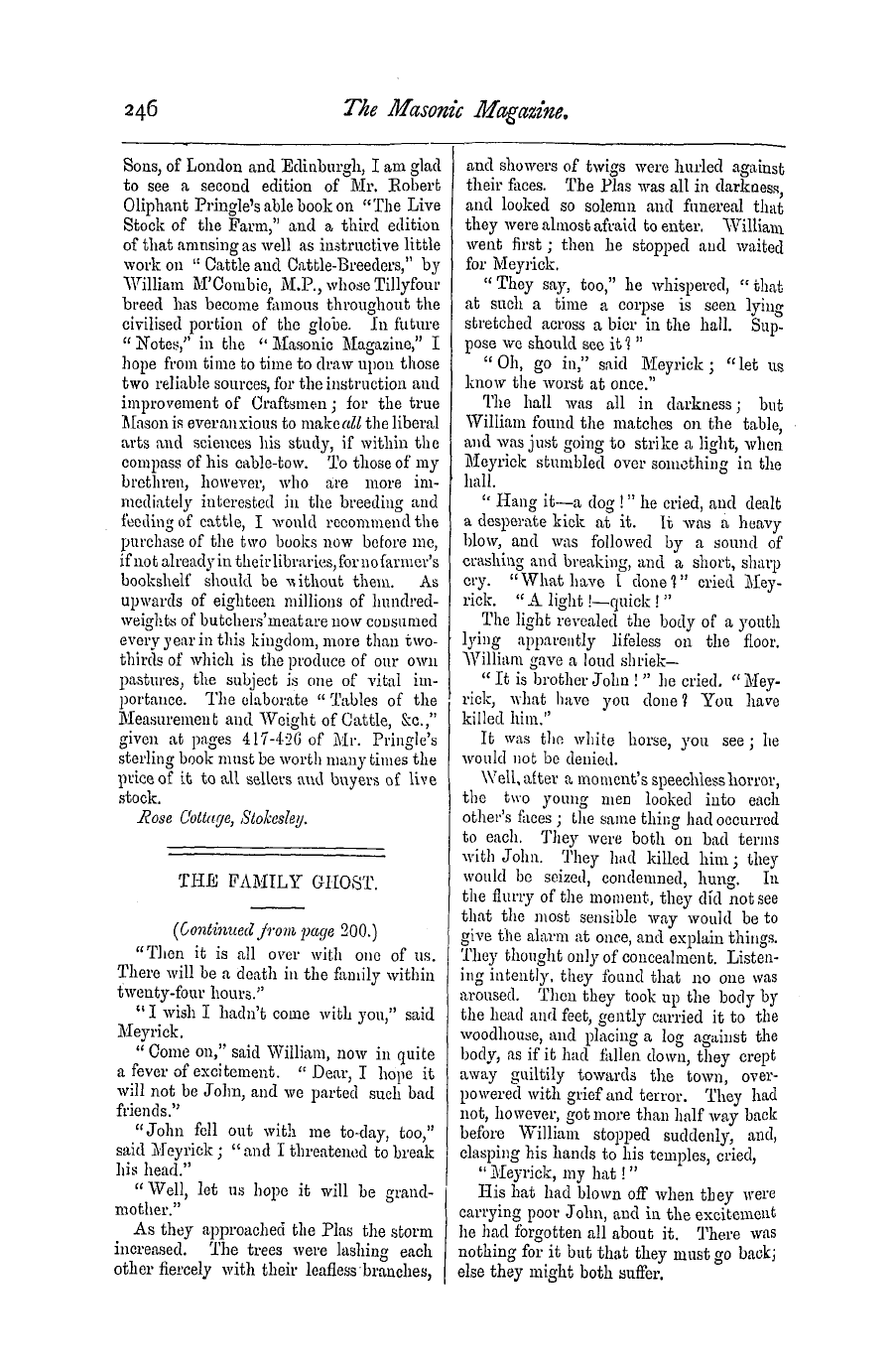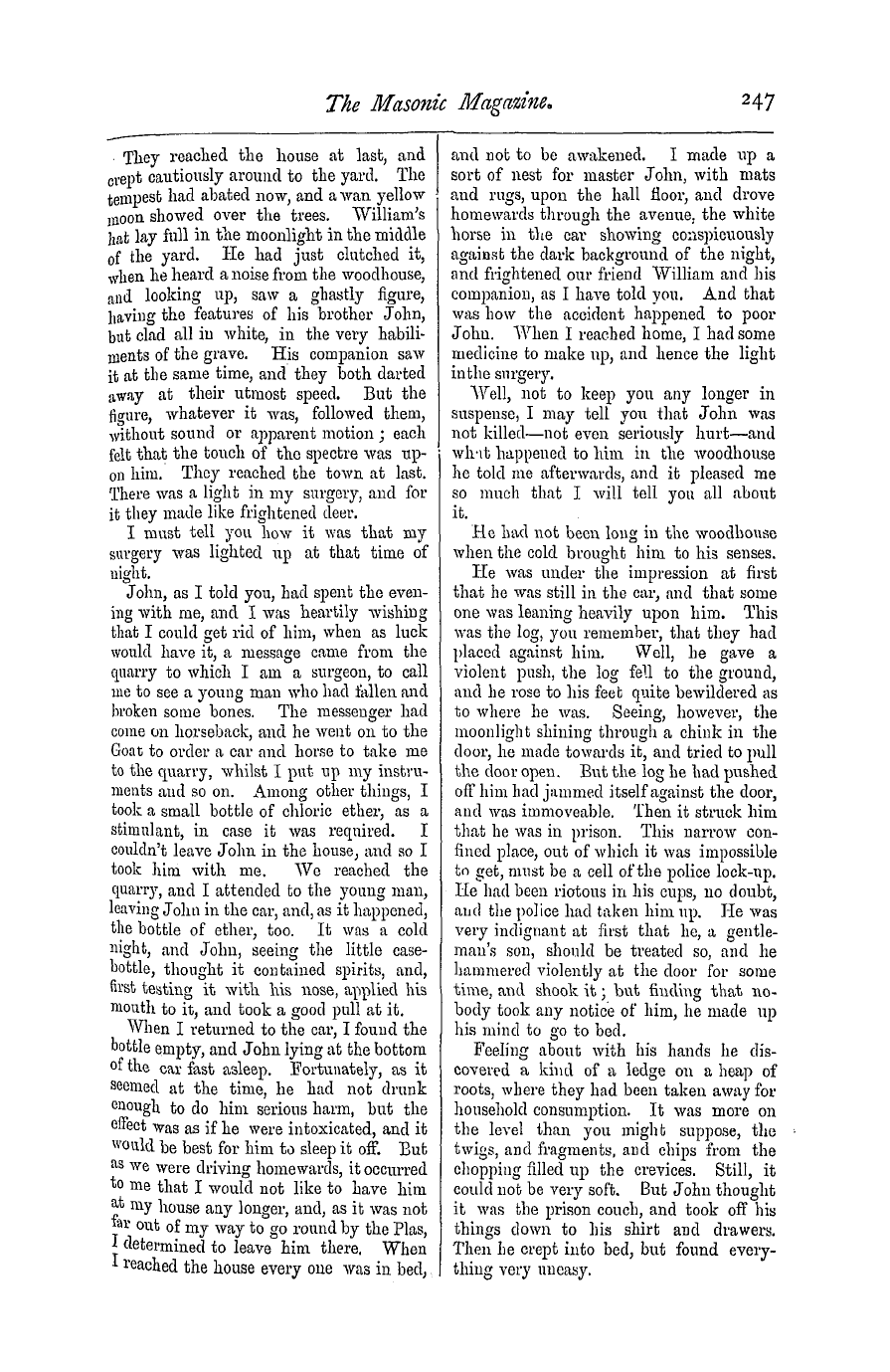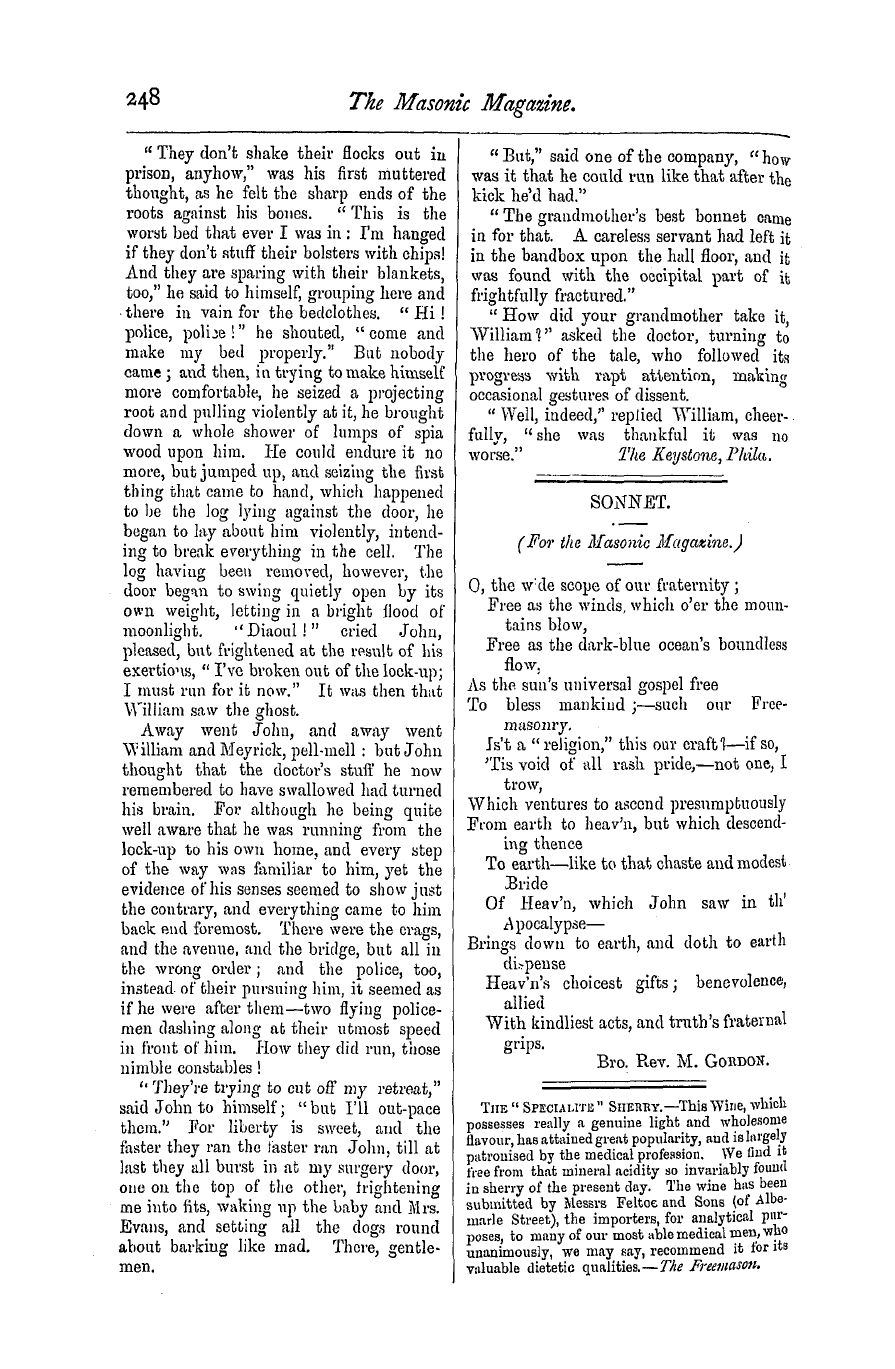Note: This text has been automatically extracted via Optical Character Recognition (OCR) software.
The Origin And References Of The Hermesian Spurious Freemasonry.
The hawk Avas anciently believed to be very prolific , and to attain to a great length of life ; both of Avhich Avere properties of that grand luminary the sun , of which it Avas a symbol . " It Avas the emblem of male deities , and called Beg ; and chiefly connected Avith them and the deities of
lig ht ; but Isis and Nephthys are found as hawks Avith their appropriate head attires . The deity to whom , hawks were more especially sacred Avas Horns . " ' * As the ox Avas considered a symbol of fire , and the piercing eyes of the lion the emblem
of light , the soaring properties of the hawk occasioned it to be received as the symbol of air . These elements becoming objects of Pagan adoration , the supreme deity Avas frequently represented under the visible symbol otfirelight and air . The ancients
, also thought that the hawk possessed the poAver of looking steadily at the sun Avithout sustaining any injury to its vision , and hence it was assimilated in its nature and attributes to the god of clay . Whether this symbol had any reference
to the Hebrew cherubim , it would perhaps be useless to enquire . This divine appearance , consisting of a man , an ox , a lion , and an eagle , was vouchsafed to Ezekiel under the JeAvish dispensation , and to St . John under that of Christ ; in both of
which cases it is pronounced to be " a living creature . "t The same august personage appeared to Adam in Paradise ; and not only tho naked feet , but the actual form Avhich the deity assumed was preserved and transmitted to him in the name applied to
him in the very first verse of the Bible , according to the opinion of learned Hebraists , on a comparison of the HebreAV letters Avith the actual hieroglyphics of E gypt . Thus Dr . Lamb says that in " hieroglyphic characters M signifies a man ,
7 a lion , " * 1 a bird ( eagle ) , H living creature ( man ) , Q * i many eyes . t . Those hieroglpyhies give ^ the phonetic word D ^ m ^ N Etonian ; " § which he thinks Avas the sole name of the deity till the time of Enos , after which he Avas known b y the name of ii HI JEHOVAH , Avhich contains the same
The Origin And References Of The Hermesian Spurious Freemasonry.
ideas by substituting ^ for the ' man , and H for the lion . For these reasons the hawk and scarabteus AA'ere combined , in the Hermesian hieroglyhtcs , in one compound symbol . ( To be continued . J
The Early History And Antiquities Of Freemasonry.*
THE EARLY HISTORY AND ANTIQUITIES OF FREEMASONRY . *
AVILLIAM JAMES HUGHAN . THE history of Freemasonry bids fair to be Avell written this century . ' During the last feAV years the contributions towards an accurate account of our ancient Society
have been many and exceedingly valuable . Another volume has lately been issued , this time from " across the big pond , " and Brother George F . Fort is the author . His aim has been to bring the antiquities of the Craft doAvn to an undisputed historical
basis , in the pursuance of which object he has frequently felt compelled to abandon the usual track followed by writers on the subject , and has relied upon authorities whose testimony—found noted in the margin—will be accepted without suspicion of intemperate or uncritical zeal .
Bro . Fort commences Avith a narrative of the state of the fine arts at the decline of the Jioman Empire , and also of the propagation of architecture and its kindred sciences by bodies of builders , who developed into the Middle-Age Freemasons , Avhose history is carried down to the formal
extinction of the society as an operative brotherhood in the year 1717 . The first part of the work is " purely an historical thread and preface to the subsequent or archaeological portion , upon which especial care and research have been bestoAved . For
the purpose of aiding in its preparation , many of the principal libraries of Europe Avere visited by the writer , and important material otherwise obtained Avhile sojourning abroad . "
Note: This text has been automatically extracted via Optical Character Recognition (OCR) software.
The Origin And References Of The Hermesian Spurious Freemasonry.
The hawk Avas anciently believed to be very prolific , and to attain to a great length of life ; both of Avhich Avere properties of that grand luminary the sun , of which it Avas a symbol . " It Avas the emblem of male deities , and called Beg ; and chiefly connected Avith them and the deities of
lig ht ; but Isis and Nephthys are found as hawks Avith their appropriate head attires . The deity to whom , hawks were more especially sacred Avas Horns . " ' * As the ox Avas considered a symbol of fire , and the piercing eyes of the lion the emblem
of light , the soaring properties of the hawk occasioned it to be received as the symbol of air . These elements becoming objects of Pagan adoration , the supreme deity Avas frequently represented under the visible symbol otfirelight and air . The ancients
, also thought that the hawk possessed the poAver of looking steadily at the sun Avithout sustaining any injury to its vision , and hence it was assimilated in its nature and attributes to the god of clay . Whether this symbol had any reference
to the Hebrew cherubim , it would perhaps be useless to enquire . This divine appearance , consisting of a man , an ox , a lion , and an eagle , was vouchsafed to Ezekiel under the JeAvish dispensation , and to St . John under that of Christ ; in both of
which cases it is pronounced to be " a living creature . "t The same august personage appeared to Adam in Paradise ; and not only tho naked feet , but the actual form Avhich the deity assumed was preserved and transmitted to him in the name applied to
him in the very first verse of the Bible , according to the opinion of learned Hebraists , on a comparison of the HebreAV letters Avith the actual hieroglyphics of E gypt . Thus Dr . Lamb says that in " hieroglyphic characters M signifies a man ,
7 a lion , " * 1 a bird ( eagle ) , H living creature ( man ) , Q * i many eyes . t . Those hieroglpyhies give ^ the phonetic word D ^ m ^ N Etonian ; " § which he thinks Avas the sole name of the deity till the time of Enos , after which he Avas known b y the name of ii HI JEHOVAH , Avhich contains the same
The Origin And References Of The Hermesian Spurious Freemasonry.
ideas by substituting ^ for the ' man , and H for the lion . For these reasons the hawk and scarabteus AA'ere combined , in the Hermesian hieroglyhtcs , in one compound symbol . ( To be continued . J
The Early History And Antiquities Of Freemasonry.*
THE EARLY HISTORY AND ANTIQUITIES OF FREEMASONRY . *
AVILLIAM JAMES HUGHAN . THE history of Freemasonry bids fair to be Avell written this century . ' During the last feAV years the contributions towards an accurate account of our ancient Society
have been many and exceedingly valuable . Another volume has lately been issued , this time from " across the big pond , " and Brother George F . Fort is the author . His aim has been to bring the antiquities of the Craft doAvn to an undisputed historical
basis , in the pursuance of which object he has frequently felt compelled to abandon the usual track followed by writers on the subject , and has relied upon authorities whose testimony—found noted in the margin—will be accepted without suspicion of intemperate or uncritical zeal .
Bro . Fort commences Avith a narrative of the state of the fine arts at the decline of the Jioman Empire , and also of the propagation of architecture and its kindred sciences by bodies of builders , who developed into the Middle-Age Freemasons , Avhose history is carried down to the formal
extinction of the society as an operative brotherhood in the year 1717 . The first part of the work is " purely an historical thread and preface to the subsequent or archaeological portion , upon which especial care and research have been bestoAved . For
the purpose of aiding in its preparation , many of the principal libraries of Europe Avere visited by the writer , and important material otherwise obtained Avhile sojourning abroad . "
















































